A changing climate is felt through a change in water. Climate change is disrupting weather patterns, amplifying the risk of extreme weather disasters, and aggravating water insecurity. In order to meet this challenge, countries have been investing in different strategies such as increasing water storage, expanding investments in water infrastructure, developing advanced warning systems to increase preparedness and more.
1. Water infrastructure investments need to increase
Water investment is imperative to enhance climate-resilient development. The
Africa Water Investment Programme can help with this transformation. Alex Simalabwi, the Executive Secretary of the Global Water Partnership (
GWP) Southern Africa, highlights the gap in current investments: “The African Development Bank estimates that USD$64 billion in water infrastructure investment is required annually to meet the 2025 Africa water vision of water security for all; the actual figure invested stands between $10 and $19 billion per year.”
Although water scarcity is not the first thing that springs to mind when mentioning the Caribbean, increased climate variability is putting a strain on the region’s water resources. “St Vincent’s recent volcanic eruption also illustrates how the fragility of the region’s water infrastructure can compound events. Ash clouds clogged streams and intakes, shutting off water supplies for days. In Barbados and surrounding islands, the same ash falls led to water shortages as their systems struggled to cope with increased clean-up consumption and a lack of storage. Such incidents highlight the importance of
water storage as a key climate adaptation strategy” describes Dr Adrian Cashman, a GWP-Caribbean Technical Committee member.
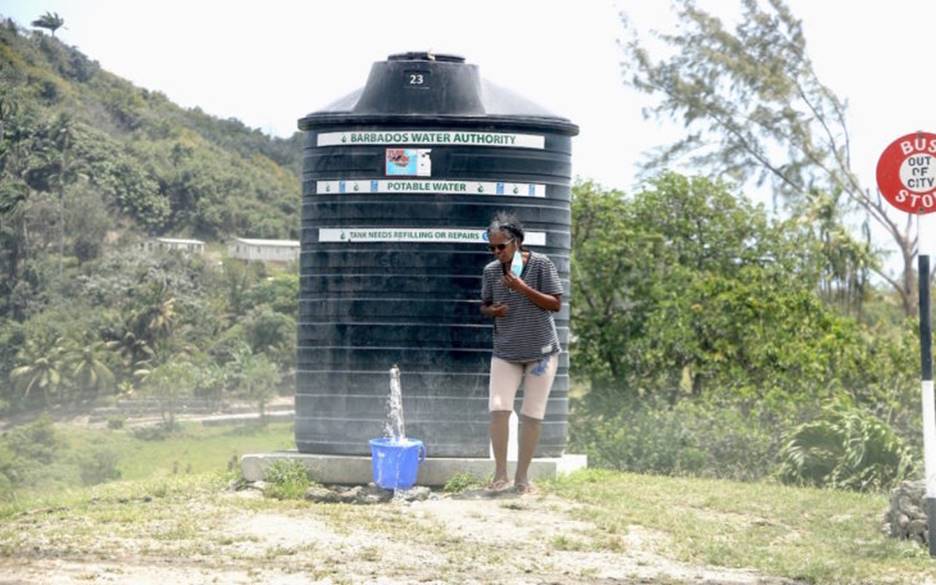 Water Authority resort to the use of communal tanks to address water shortages in Barbados; Credit: GWP
Water Authority resort to the use of communal tanks to address water shortages in Barbados; Credit: GWP
2. Early warning systems preparedness requires attention
More than a decade of experience in the Hindu Kush Himalayas
showcases that preparedness is a major gap in disaster risk management planning. This region is prone to natural hazards like floods and flash floods, further exacerbated by climate change. Lack of access to awareness-raising products and early warning systems for multiple hazards has been identified as
a priority knowledge gap for Hindu Kush Himalayas. “Floods in small rivers and tributaries can be disastrous for downstream communities, but they get less attention from the government and other concerned agencies”, says Dr. Neera Shrestha Pradhan at the International Centre for Integrated Mountain Development (
ICIMOD). “ICIMOD’s people-centred flood preparedness approach, the
Community Based Flood Early Warning System, is an instrument to detect floodwater upstream, but its effectiveness depends on a robust institutional mechanism and preparedness planning.” She highlights that in the 2017 flood, communities in Nepal were able to send
early warning across the border to Bihar in India, providing almost eight hours of lead time for preparedness, saving lives and livestock.
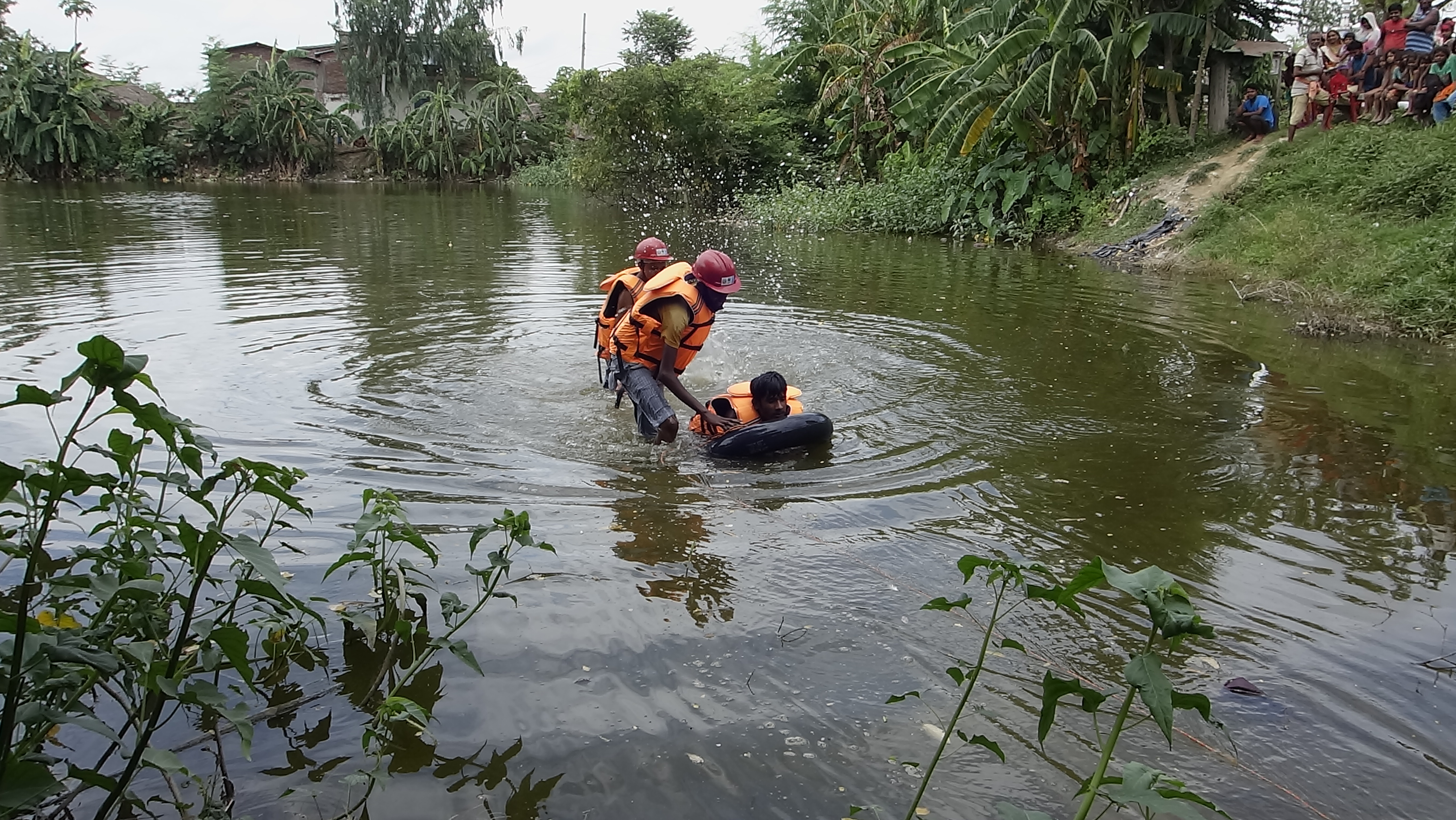 Mock drill in 2017; Credit: Sundar Rai, ICIMOD 3. Reduce risk and risk transfer: human displacement and mobility
Mock drill in 2017; Credit: Sundar Rai, ICIMOD 3. Reduce risk and risk transfer: human displacement and mobility
Research on human mobility shows a close connection to water-related hazards such as floods and droughts. “A
recent SLYCAN Trust study makes this connection with how climate impacts on water resources affect human mobility”, says Vositha Wijenayake, Executive Director of the
SLYCAN Trust, a think tank based in Sri Lanka. A case study based on 168 interviews conducted across an agricultural district of Sri Lanka indicates a strong connection between scarcity of water resources and farmers moving to cities to work in areas such as construction as unskilled labourers. The information gathered also connects to risk management and addressing climate-induced losses and damages, existing risk transfer options, gendered implications of climate impacts, social inclusion and protection.
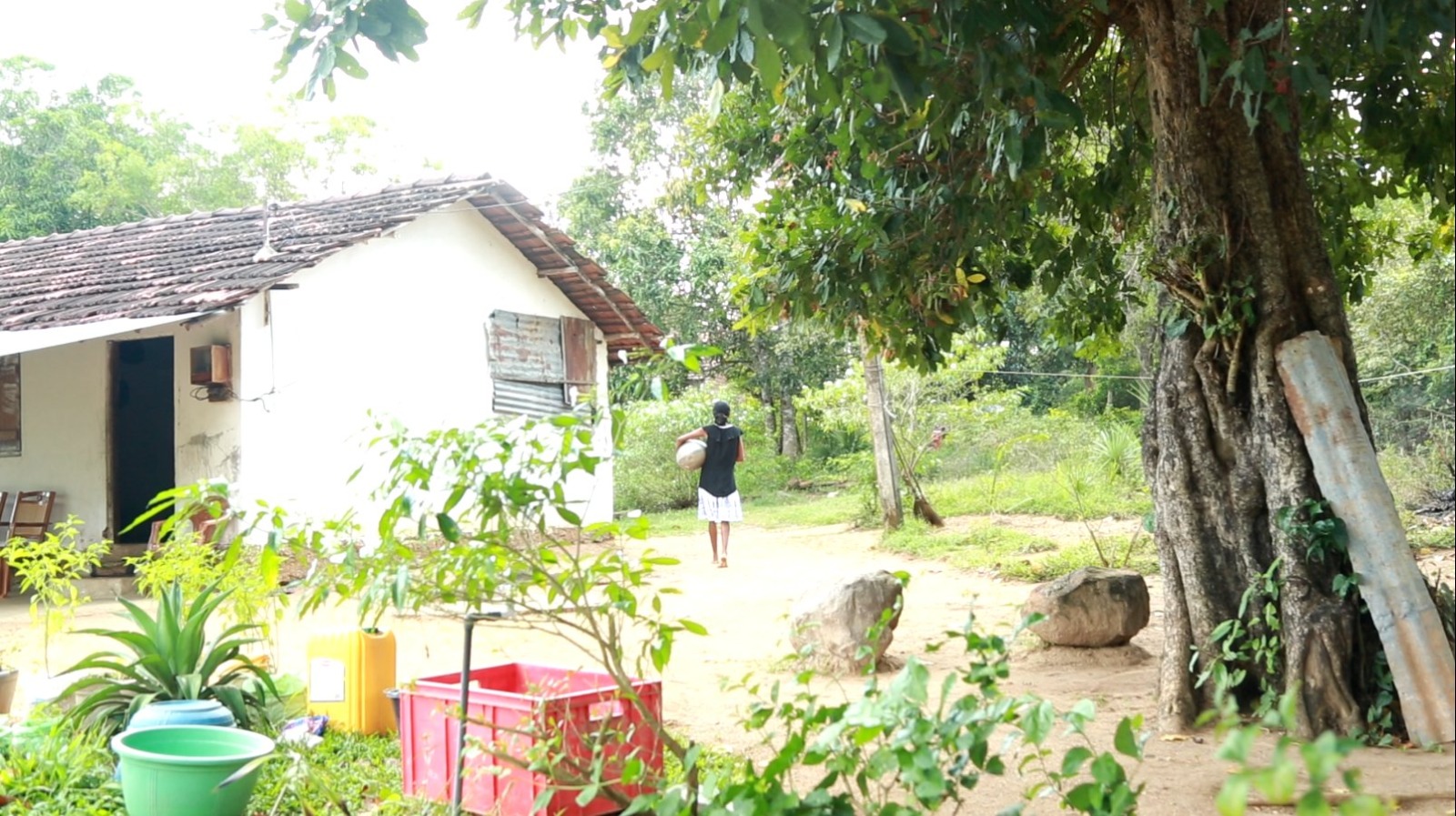 Gendered implications as women and children usually stay behind in climate-impacted areas in rural Sri Lanka; Credit: SLYCAN Trust 4. Climate information services support responses to hazards
Gendered implications as women and children usually stay behind in climate-impacted areas in rural Sri Lanka; Credit: SLYCAN Trust 4. Climate information services support responses to hazards
East Africa is facing a range of water crises driven by climate extremes. Last year, the region experienced one of its wettest years on the record, which led to a series of floods in Kenya, Ethiopia, Uganda, South Sudan, and Sudan. In Sudan, the river Nile reached one of its highest levels on the record and in May 2020, Lake Victoria also reached its highest record, 13.5 meters. Abubakr Salih Babiker, Climate scientist from the IGAD Climate Prediction and Application Centre (ICPAC) explains: “Two of the major drivers for these extreme climate events are the multi-year variation in the surface temperature in the eastern Pacific Ocean and the rapid warming of the western part of the Indian Ocean. Both phenomena are expected to increase due to climate change, leading to a higher risk of water-related problems”. Marta Baraibar, an ICPAC Climate services expert underlines that climate services tools help reduce the risks posed by extremes. A recently developed regional
Hazards Watch System provides alerts against flash and riverine floods, drought, pests, and the exposed population and infrastructure to these risks.
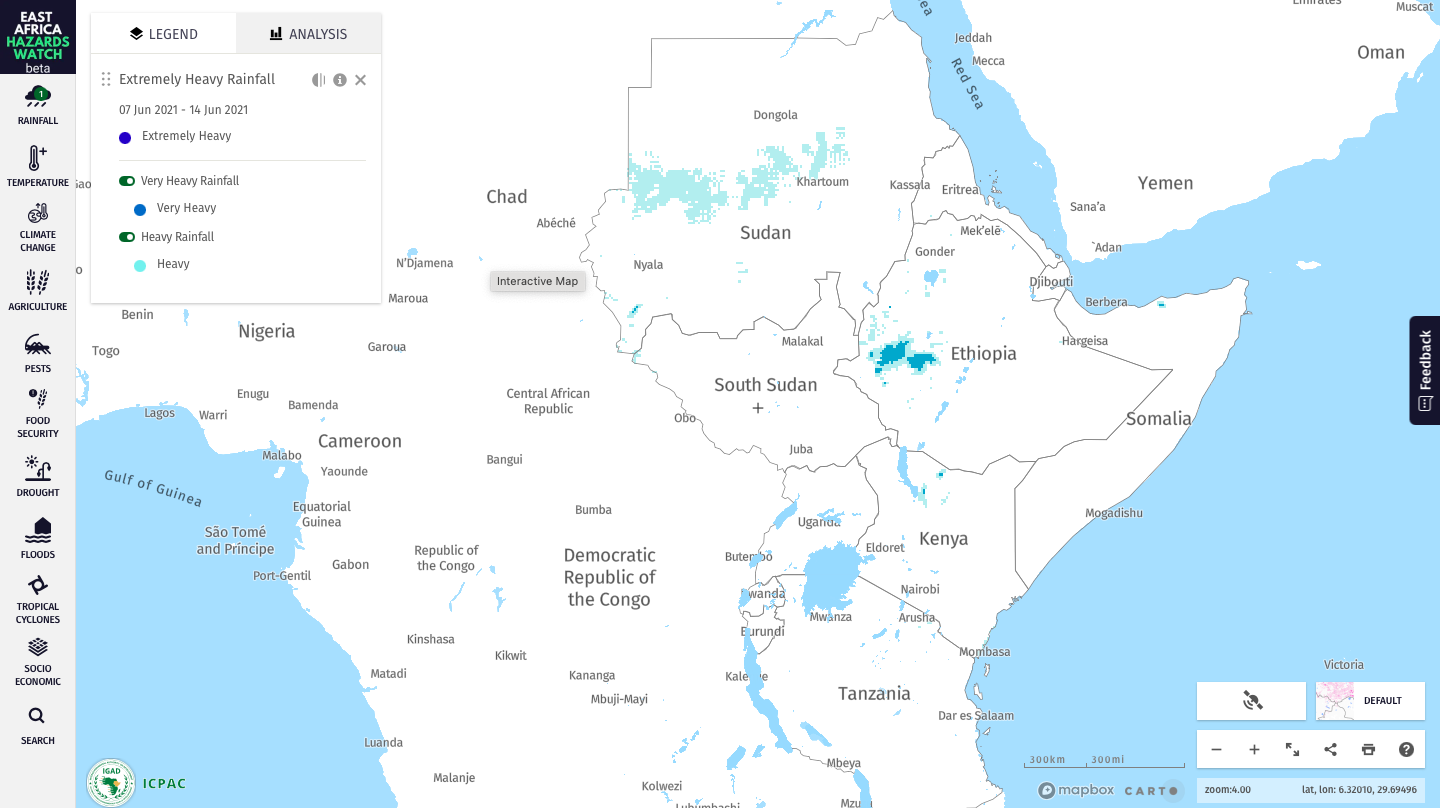 East Africa Hazard Watch System developed to reduce risks from hazards
East Africa Hazard Watch System developed to reduce risks from hazards
5. Farmers need access to relevant forecasts
“Not knowing when the next rain will fall makes farming increasingly difficult in many parts of the world. The increasingly irregular precipitation patterns and the high rainfall in critical periods of crop growths are major risks to agriculture and depended population” notes Dr. Upali Amarasinghe, Senior Researcher at the
International Water Management Institute. He adds that short-term weather forecasts and improved water and environmental management can reduce agricultural and health risks. Timely, regular and accessible forecasting services provided by national meteorological and hydrological services are key to help farmers make informed decisions.
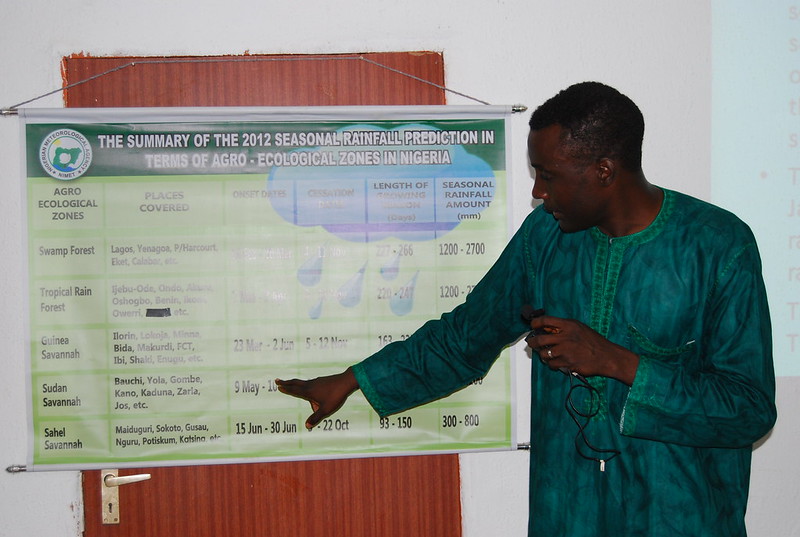 Met-Agriculture roving seminar in Jigawa state of Nigeria; Credit: WMO
Met-Agriculture roving seminar in Jigawa state of Nigeria; Credit: WMO
6. Transboundary water cooperation can make a difference
More than 60% of freshwater worldwide flows in basins shared by two or more countries. “Transboundary water cooperation can help make adaptation more effective. It can reduce uncertainties through the exchange of data and help to identify better adaptation priorities by enlarging the planning space. Countries can even share adaptation costs and benefits. Basin organisations play a crucial role by planning and coordinating activities on the basin scale and sometimes supporting national adaptation. Examples of this include the Amazon, Danube, Mekong and Niger basins” outlines Ms Sonja Koeppel, Secretary of the Convention on the Protection and Use of Transboundary Watercourses and International Lakes. The
Water Convention has an important role to play to help countries jointly adapt to climate change as transboundary cooperation can also strengthen actions on the ground, reducing the vulnerability of local communities.
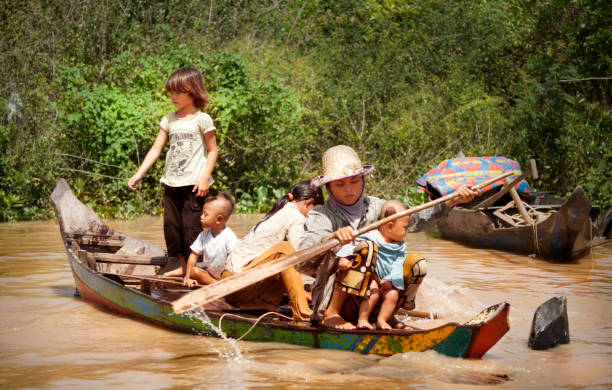
Tonlé Sap Lake in Cambodia, part of the lower Mekong basin. The Mekong river basin is a transboundary river that cuts across six countries;
Credit: Chong Kneas (istockphoto)
Cross-sectoral policies and innovation is key to becoming resilient
The six perspectives emphasize the need for stronger climate information services, progressive cross-sectoral and transboundary planning and investments to strengthen resilience planning, given the uncertain hydrological cycle changes. An integrated view on water resources, the biosphere, environmental flows and human interactions is necessary to devise sustainable and innovative solutions.
The
Paris Agreement has a role to play here. National Adaptation Plans and Nationally Determined Contributions (NDCs) can present how water is being integrated into national climate planning. The latest
NDCs focus on policy and institutional measures for enhancing risk management, integrating disaster risk management into adaptation efforts and establishing early warning systems. In addition, initiatives such as the
GWP Water Changemaker prizes also play a role to promote stories of successful innovative initiatives that already confront the crises we face.
More information
News image by Alexandre Lecoq (found on Unsplash)